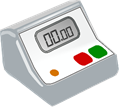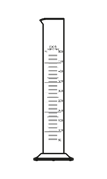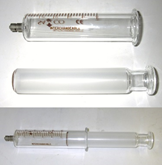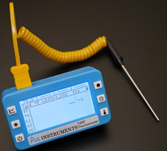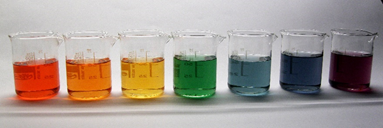Contents
Practical Skills Assessed in the Practical Endorsement
Choosing Appropriate Apparatus
You need to be able to choose appropriate apparatus to measure the following:
Mass – balance/scales (consider the precision of the equipment you need for your experiment)
Time - stop clock/watch
Volume – syringe, measuring cylinder, gas syringe
Temperature – thermometer/data logger
Length- ruler/tape measure (consider the scale to ensure a high enough precision of the equipment for your experiment)
pH – Indicator paper, indicator solution, data logger/pH meter
Practical Activities
All the same skills that are assessed in the written examination are also assessed in the practical endorsement.
These will be assessed across a minimum of 12 practical activities over the two years of your A-level.
The activities are:
- Microscopy
- Dissection
- Sampling Techniques
- Rates of Enzyme Controlled Reactions
- Colorimeter or Potometer
- Chromatography OR Electrophoresis
- Microbiological Techniques
- Transport in and Out of Cells
- Qualitative Testing
- Investigation Using a Data Logger OR Computer Modelling
- Investigation into the Measurements of Plant or Animal Response
- Research Skills
Common Practical Assessment Criteria
For all exam boards, there is a common practical assessment criteria (CPAC) which is used to assess your competence in A-level science practicals.
These are outlined in the table below:
| Competency | Practical Mastery |
| 1) Follows written procedure | a) Correctly follows instructions to carry out experimental techniques or procedures. |
| 2) Applies investigative approaches and methods when using instruments and equipment. | a) Correctly uses appropriate instrumentation, apparatus, and materials (including ICT) to carry out investigative activities, experimental techniques, and procedures with minimal assistance or prompting. b) Carries out techniques or procedures methodically, in sequence and in combination, identifying practical issues and making adjustments when necessary. c) Identifies and controls significant quantitative variables where applicable, and plans approaches to take account of variables that cannot readily be controlled. d) Selects appropriate equipment and measurement strategies to ensure suitably accurate results. |
| 3) Safely uses a range of practical equipment and materials. | a) Identifies hazards and assesses risks associated with these hazards, making safety adjustments as necessary when carrying out experimental techniques and procedures in the lab or field. b) Uses appropriate safety equipment and approaches to minimize risks with minimal prompting. |
| 4) Makes and records observations. | a) Makes accurate observations relevant to the experimental or investigative procedure. b) Obtains accurate, precise, and sufficient data for experimental and investigative procedures and records this methodically using appropriate units and conventions. |
| 5) Researches, references, and reports. | a) Uses appropriate software and/or tools to process data, carry out research, and report findings. b) Cites sources of information, demonstrating that research has taken place, supporting planning and conclusions. |
For each of the practical activities, your teacher will assess you in class to determine if you have mastered the practical skill and the five competencies mentioned above (you may not be assessed on all five in every practical). This assessment will be supported by your report (the equipment, method, observation, analysis, conclusion, and evaluation), most likely written up in your lab book, so that you can demonstrate the competencies that would be assessed from written work.
Risk Assessments
Risk assessments are compulsory for all experiments. You must be aware of what can harm you, the harm it could cause, and how to prevent it from happening. This is often written up as a table.
| Hazard | Risk | Prevention/Treatment |
| What could harm you. | e.g. acid | What harm could it cause you. |
| e.g. corrosive to skin and eyes | What actions to put in place to prevent it or treat it if it happens. | e.g. wear goggles and a lab coat |
Research and Referencing
You may need to research to help you plan a valid method or to help you explain your results.
When you research, you must make sure that the source is reliable and trustworthy.
Selecting Reliable and Trustworthy Sources
Reliable– Do many sources agree and corroborate the facts?
Trustworthy– Who wrote the article? Was it a scientist? Was it biased? Was it peer-reviewed? Is it a reputable publisher?
Referencing
When using research, you must write all information in your own words (otherwise it is plagiarism), and at the end of the sentence/paragraph, you rewrite what you said in brackets where you rewrote it from, but just the surname of the author and the year (Estruch 2018).
At the end of the work, you then include a bibliography with the full reference (an example for a book and a website are below).
Bibliography
Estruch K (2018). How to Reference Research. Cat Publishing.
Howes J (2018) www.HowesToReference.co.uk - Date accessed September 14th, 2018


